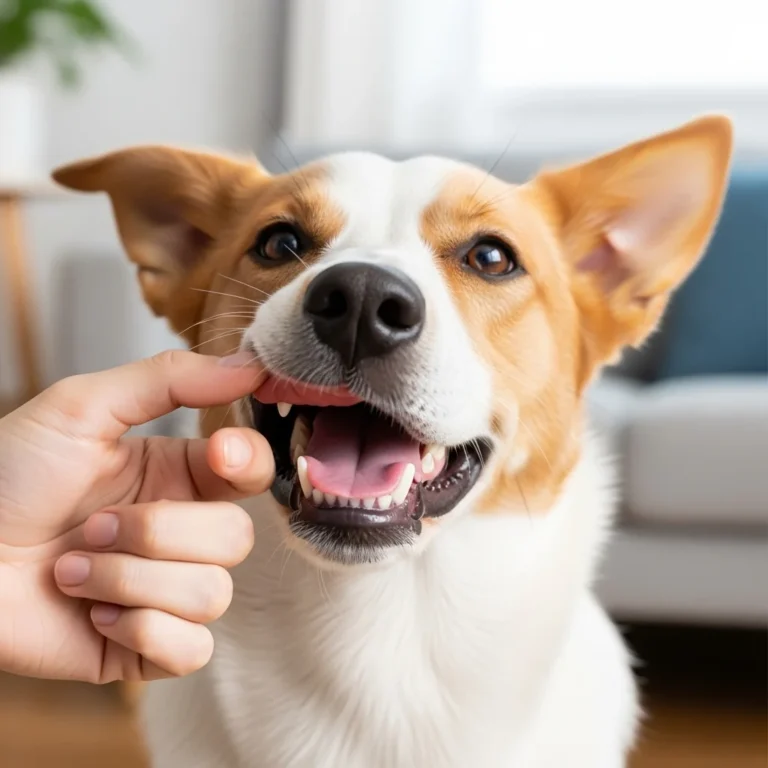
pale gums in dogs
Hey, dog parents! We all love those slobbery kisses and tail wags that make our furry buddies the best, right? But sometimes, our pups can’t just bark out, “Yo, I’m not feeling great!” That’s where we gotta play detective and check out little clues—like the color of their gums. Trust me, those gums can spill some serious tea about your dog’s health. Let’s dive into what pale gums in dogs could mean, why it’s a big deal, and how to keep your pup thriving. Ready? Let’s go!
🦷 Identification and Basics
What color should healthy dog gums be?
Okay, so picture this: healthy dog gums should look like a nice, vibrant salmon pink—like a sunset vibe in your pup’s mouth.
what do pale gums look like in dogs?: If you’re seeing super pale, white, blue, or crazy red gums, that’s your dog’s way of waving a red flag. Something might be off, and it’s worth a closer look.
How do I check if my dog’s gums are pale?
Checking your dog’s gums is easier than convincing them to drop that squeaky toy. Just gently lift their lip (bribe with a treat if they’re squirmy), press your finger on their gum until it turns white, then let go. If the color pops back in 1–2 seconds, you’re golden. Takes longer? Hmm, might be time to chat with your vet.
What does it mean if my dog’s gums are white or very pale?
White or super pale gums? Yikes, that’s not just a bad fashion choice. It could mean your pup’s dealing with something serious like anemia, blood loss, or funky circulation. Basically, their body’s screaming, “Help, I need a tune-up!”
What is capillary refill time, and how is it tested in dogs?
Capillary refill time is just a fancy way of saying, “How fast does the blood flow back?” Press those gums ‘til they’re white, let go, and count how quick the pink comes back. 1–2 seconds is the sweet spot. If it’s sluggish, your dog’s circulation might be taking a nap.
⚠️ Common Causes
Pale gums are like your dog’s check-engine light—something’s up, and it could be a few things. Here’s the rundown:
- Anemia: Too few red blood cells, maybe from sneaky parasites, blood loss, or some long-term health drama.
- Blood loss: Could be from an injury, a tumor, or even an ulcer throwing a party inside.
- Shock: Trauma, a bad infection, or a wild allergic reaction can mess with blood flow.
- Heart disease: When the ticker’s not pumping right, gums can lose their glow.
- Toxins and poisons: Bad stuff like rat poison or toxic plants can wreak havoc.
- Dehydration and heatstroke: If your pup’s overheated or super thirsty, those gums might look ghostly.
🧠 Symptoms and Urgency
Other symptoms to watch for
Pale gums are just one piece of the puzzle. Keep an eye out for your dog acting like they’re auditioning for a zombie flick—think lethargy, weakness, crazy fast breathing, or even collapsing. Vomiting, diarrhea, sunken eyes, or sticky gums? Yeah, that’s your cue to move fast.
Are pale gums always an emergency?
Not gonna lie, pale gums don’t always mean panic mode. A little paleness could just be your dog being stressed or a tad dehydrated (like after a wild zoomie session). But if it sticks around or comes with scary symptoms, it’s time to hit the vet ASAP.
When to seek immediate veterinary help
If your pup’s gums are pale and they’re acting like they just ran a marathon, collapsed, or are puking their guts out, don’t wait. Call your vet, like, yesterday. Those signs scream emergency.
Can cold temperatures or inactivity temporarily cause pale gums?
Sometimes, if it’s freezing or your dog’s been lazing around like a couch potato, their gums might look a bit pale. No biggie if it bounces back quick. If it doesn’t? That’s when you start worrying.
🩺 Diagnosis and Treatment
So, you spot pale gums and haul your pup to the vet (good call!). Here’s what’s gonna go down:
- Diagnosis: Your vet’s gonna play Sherlock, checking those gums, running blood tests, and maybe even sneaking a peek inside with imaging to spot bleeding, infections, or organ issues.
- Tests: Expect stuff like a complete blood count (CBC), chemistry panels, pee tests, or parasite checks. It’s like a full-body MOT for your dog.
- Treatment: Depends on what’s up. Could be blood transfusions for major blood loss, meds for infections or parasites, surgery for internal issues, or IV fluids and oxygen to get your pup back in the game.
🛡️ Prevention and Long-Term Care
Keeping those gums pink and pretty is all about keeping your doggo happy and healthy. Here’s how:
- Preventive measures: Regular vet visits and vaccines are your BFFs. Think of it as your dog’s annual spa day, but with shots.
- Diet and hydration: Feed ‘em a balanced diet and keep that water bowl full. No one likes a hangry or thirsty pup!
- Parasite control: Fleas, ticks, and worms? Nope, not on your watch. Stay on top of those pest control meds.
- Exercise and stress management: Let your dog run, play, and live their best life, but don’t let ‘em overdo it. A chill vibe and routine keep stress at bay.
🐾 Final Thoughts
Your dog’s gums are like a little health report card. Pale gums might not always mean the world’s ending, but they’re definitely worth a second glance. Stay on top of vet visits, keep their diet on point, and pay attention to any weird vibes your pup’s giving off. If those gums look off and your dog’s acting funky, don’t sleep on it—call your vet. After all, our furry pals deserve all the love (and quick action) we can give ‘em. Better safe than sorry, right?
Want more pet health tips? Check out petmd for some cool insights, or hit up your vet for the full scoop!
please leave comment
sources
- PetMD
- Veazie Veterinary Clinic
- Garden State Veterinary Specialists
- PDSA
- The Ridge Veterinary Clinic
- Vets Now
- Ridgeview Animal Hospital
- Walnut Creek Veterinary Clinic
- Skyline Veterinary Clinic
- Broomfield Veterinary Hospital
you may like it






